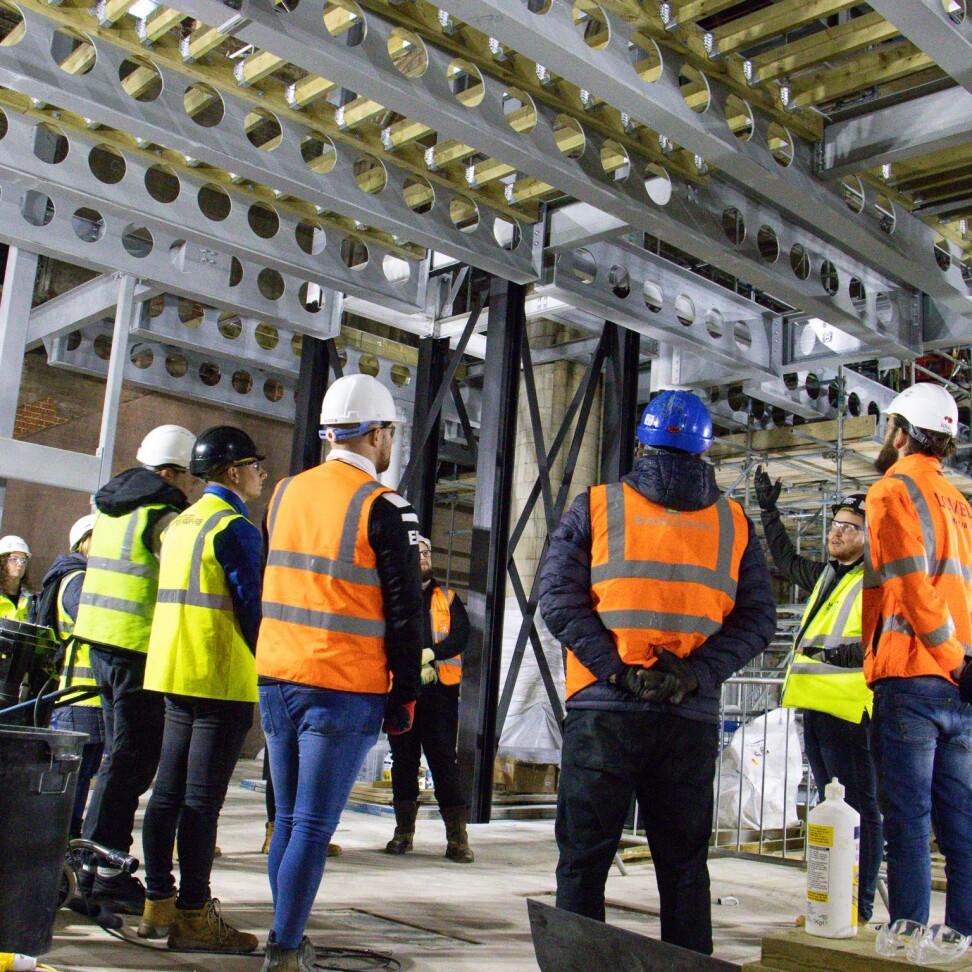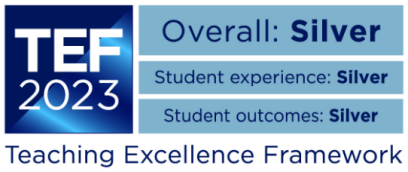HNC Architectural Technology for England

Do you have an enquiring mind, and are you eager to develop the ability and confidence to work across different business functions? Are you keen to lead, manage, respond to change, and tackle a range of complex construction situations? Then this could be the course for you! This qualification provides you with the core skills required for a range of fantastic career options in construction.
- Level
- 4
- Entry Point
- Sep 2025
- Duration
- Part Time, 2 years
- Venue
- City College Norwich campus
- CCN Course Code
- G0069

Reasons to study
this course
The purpose of Pearson BTEC Higher Nationals in Architectural Technology is to help you develop as professional, self-reflecting individuals able to meet the demands of employers in the construction sector and adapt to a constantly changing world. The qualifications aim to widen access to higher education and enhance the career prospects of those who undertake them.
A balance of employability skills and the knowledge essential for those with entrepreneurial, employment or academic ambitions will be offered.
In developing the BTEC Higher Nationals in Architectural Technology for England, Pearson have worked closely with the:
-
Chartered Association of Building Engineers (CABE)
-
Chartered Institute of Architectural Technologists (CIAT)
-
Chartered Institution of Highways & Transportation (CIHT)
-
Institute of Highway Engineers (IHE)
-
Institution of Civil Engineers (ICE)
-
Institution of Structural Engineers (iStructE)
-
Royal Institution of Chartered Surveyors (RICS)
By aligning to professional body competency standards, content and assessment supports you to develop as professional practitioners for the future.
Bryn Mainwaring - Course Leader HNC Architectural Technology for England (HTQ)
I am Bryn, and I am course leader for HNC Architectural Technology for England (HTQ). I enjoy lecturing, teaching and mentoring students, bringing progressive industry knowledge into the lectures. My, and the rest of the teaching team's, expertise will help provide you with practical insights and a thorough understanding of the essential skills needed to excel in the construction industry.
I have a diverse background in architecture and construction, training as an architectural technician and then as an architect. I have worked on various projects and roles in the industry, including many large-scale residential and educational projects as an architect and project manager, predominantly in the technical design and contract management stages of projects; this includes focussing on the digital management aspects, from CAD, to BIM, to information management. I have worked for private architecture practices and public property bodies, having firsthand insight into the practical challenges and complexities of delivering successful projects.
Contact course leaderWhere will this
course take you?
Pearson work with a range of higher education institutions around the world that recognise and accept Pearson BTEC Higher Nationals as qualifications for entry to an undergraduate degree. Many universities allow advanced entry to the second or third year of a degree, and agreements can include credit transfer, articulation and case-by case admission.
Students should be aware that university admission criteria are always subject to change and remain at the discretion of the institution.
This Architectural Technology course is a solid foundation for many and a stepping stone to various further qualifications and numerous professions, such as an Architectural Technologist, Architectural Technician, BIM Technician, BIM Coordinator, and BIM Manager.
Course structure
This course is studied part time over two years. This programme is delivered over one day a week - 30 teaching weeks per year. Teaching days for this course are currently held either Mondays or Wednesdays.
Level 4 modules
Construction Design Project (Pearson Set) Core
The success of any project relies on the development of a good design and the technical information to allow the project to be built. The aim of this unit is to help you to appreciate and be aware of the design process and the information required to communicate the design itself, specify and quantify materials, provide instructions for the assembly and erection, and facilitate precise costing and project management. Topics included in this unit are: project phases; construction drawing; detailing; Computer Aided Design (CAD); Building Information Modelling (BIM); schedules; specifications; bills of quantities; information collaboration. On successful completion of the unit, you will be able to analyse scenarios, make decisions, and produce drawings and specifications to achieve appropriate, creative, and innovative home design proposals.
Construction Technology Core
The basic principles of construction technology have not changed for hundreds of years. However, the materials and techniques used to achieve these basic principles are constantly evolving to enable the construction industry to deliver better quality buildings. Scarcity of resources and the continuing demand of more sophisticated clients, end users and other stakeholder interests, are driving the construction industry to provide buildings that facilitate enhanced environmental and energy performance, and greater flexibility. This is in response to ever-increasing financial, environmental, legal and economic constraints. This unit introduces the different technological concepts used to enable the construction of building elements, from substructure to completion, by understanding the different functional characteristics and design considerations that need to be borne in mind when selecting the most suitable technological solution.
The Construction Environment Core
Construction is a complex and dynamic sector of the local, regional, national and international economy. In many countries it is a driving force in the growth of finance, property and employment. This also means that it has considerable impact on many factors beyond its direct influence on the buildings and infrastructure that are created and maintained. The construction industry is one of the major contributors to CO2 emissions; the way that buildings are designed, constructed and maintained means they have an ongoing impact on the environment. Similarly, as a major employer, the industry has an ongoing impact on the working conditions of those in the sector and the way that people are educated, trained and supported through their careers. In this unit, we will explore the make-up and the impact of the construction industry on the environment and society. By exploring the roles and relationships of individuals and organisations in the construction sector, you will gain an overview of the organisational and the personal ways in which the sector works to continue to improve the built environment and limit its impact on the environment, while maintaining economic sustainability and growth.
Legal and Statutory Requirements in Construction Core
The construction industry is perceived to be a dangerous, noisy and disruptive area of work that impacts on the use of land and buildings. It is, however, governed by a range of areas of law to ensure that professionals comply with legal and statutory requirements to design, construct and deliver buildings and alterations using safe working practices and utilising land appropriately. This unit introduces the different areas of law that are relevant to the construction industry throughout the development process. This includes applying for planning approval to undertake construction activities and using building control regulations to evaluate building design and alterations at the preconstruction stage. We will explore the laws of occupiers’ liability, trespass and nuisance to manage construction activities on-site, and the legal aspects of the sale and leasing process involved in the disposal of buildings, using the law of contract and land law. On successful completion of this unit, you will be able to apply legal and statutory requirements and processes common to the construction sector.
Digital Applications for Construction Information Core
Achieving successful projects in the built environment requires a range of different types of information to describe the project, quantify the materials, provide clear instructions for assembly and erection, and allow for accurate costing and management. Throughout the process of design, construction and post-occupancy management, information is critical. Central to construction information is the production of construction drawings; these provide the geometric definition of a project through the use of graphic conventions. Most other forms of construction information will rely, to a greater or lesser degree, on reference to construction drawings. Therefore, the production of accurate and clearly defined construction drawings is a critical part of the overall construction information package. Digital applications play a key role in the production of construction drawings; they provide a way to manage drawing information and make changes with greater efficiency and can be shared readily through a variety of digital communication systems. In this unit we will develop the skills to needed produce accurate and consistent construction information using industry-standard software. On completion of the unit, you will be able to produce a construction information package. Successful achievement of the unit may also lead to vendor certification.
Financial Management and Business Practices in Construction Core
The contemporary construction company operates in a very competitive sector of the economy; the size of company ranges from small to large. The types of company include sole traders, partnerships, limited companies and public limited companies; they could be working in local, regional and multinational contexts. Construction companies have evolved their business practices to ensure economic survival and growth. However, they continue to be impacted by the construction market and external factors such as interest rates, government legislation and political and economic conditions. This unit introduces you to the concepts of business management and financial control. They will examine a range of factors that influence the ways in which companies grow, raise finance, and control their costs and resources. Topics included in this unit are: the legal status of building companies and how it impacts on raising finance; the different sources of finance and how a company manages them; contemporary management strategies; how the day-to-day management of the different resources used by a construction company have an impact on their success. On successful completion of this unit, you will be able to analyse the legal status of different types of construction companies, their business strategies and how they raise and manage their finances, and the management of the resources available to them.
Building Information Modelling Core
Building Information Modelling (BIM) is often assumed to be a software solution – a more advanced form of CAD, for producing construction information. However, while software can play an important part, BIM is actually an approach to information generation and management in a collaborative environment. The aim of BIM is to ensure that better information is created, shared and kept secure so that the design, construction, occupation and maintenance of our built assets can be more efficiently managed. In short, BIM is a collaborative approach that involves a clearly defined set of processes. The aim of this unit is to give you the background knowledge and understanding of Building Information Modelling (BIM) in the context of the construction industry. You will be introduced to the drivers and benefits associated with BIM, as well as the terminology that surrounds it. The knowledge and skills gained in this unit will allow you to understand the importance of BIM in the context of current roles and responsibilities in the construction industry. You will also gain an understanding of how this may influence future choices in your professional career.
Digital Applications for Building Information Modelling Core
Building Information Modelling (BIM) and the use of data in the planning, construction and operation of built assets has become commonplace for both large and small projects. The ability to manage projects throughout their lifecycle, using a common data set, has the potential to impact on the built environment in numerous ways such as supporting efficiency, reducing costs and driving sustainability. However, for this to be achieved there is a need for the development of consistent, accurate and accessible data.
While BIM is, effectively, a process of information management through a project lifecycle, it is most often based on the use of digital applications to generate project data. In this, the model is central in the process of designing and producing information that will facilitate construction and, later, the operation of the built asset.
In this unit, we will explore the key processes in using digital applications to produce data and construction information that will enable the BIM process. Through completion of this unit, you may have the opportunity to achieve vendor certification in industry-standard Building Information Modelling systems.
Course details
Assessment methods
You will be assessed through a range of mediums, to reflect the variety of skills and knowledge gained as you progress. This includes a mix of assignments, presentations, project work and exams.
Awarded by
This course is awarded by Pearson and regulated by The Office for Students.


Entry requirements
You will need:
GCSE grades at A* to C (or equivalent) and/or 9 to 4 (or equivalent) in Maths and English AND one of the following:
- A BTEC Level 3 qualification in Construction or other related Level 3 qualification
- A GCE Advanced Level profile that demonstrates strong performance in a relevant subject or adequate performance in more than one GCE subject.
- An Access to Higher Education Diploma from an approved further education institution
- An international equivalent to the above qualifications
Mature Students
If you are a mature student with relevant industrial background, you may also be considered subject to interview.
Course fees
£6,720 for UK students.
£8,120 for international students (students from outside of the UK).
Pearson Registration Fee
In addition to the course fees, there is also a Pearson registration fee, which are yet to be set for 2025/26, which will be charged separately to the tuition fees above.
As a guide, the 2024/25 BTEC Level 4 Higher National Student Registration (HTQ HNCs) fees were £269.90, in year one, with a further £24.00 learner registration in each subsequent year of study.
Employer Sponsorship
If your course fees are being sponsored by your employer, please be aware that CITB offer some funding to support technical training for employers in the Construction sector; please see their website for details.
We were awarded a TEF Silver rating overall in 2023, achieving this for both student experience and student outcomes.

Search courses
Search CCN HE



